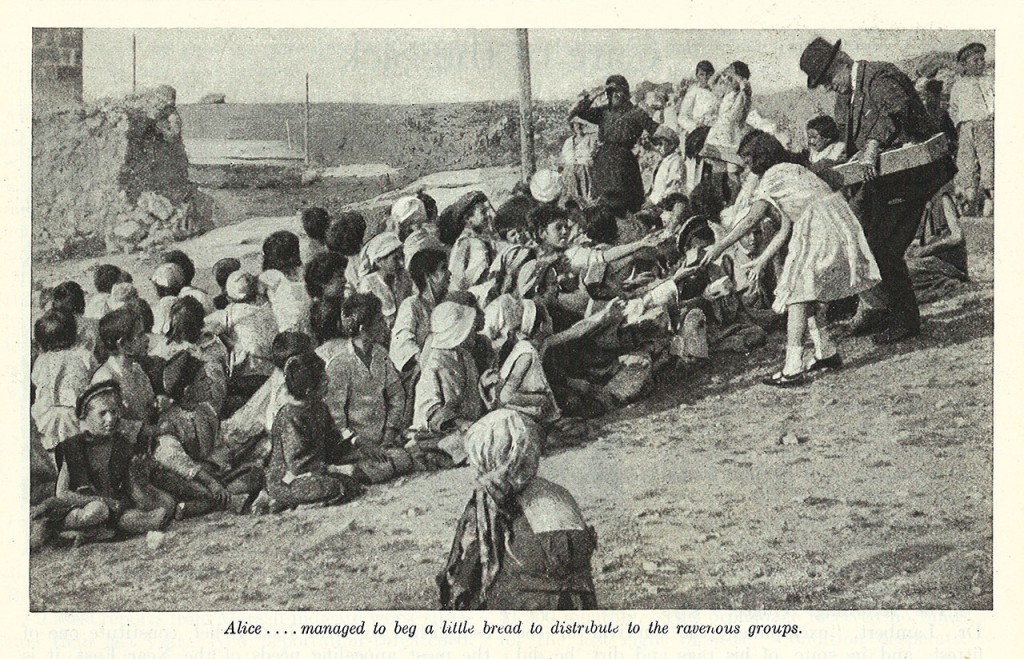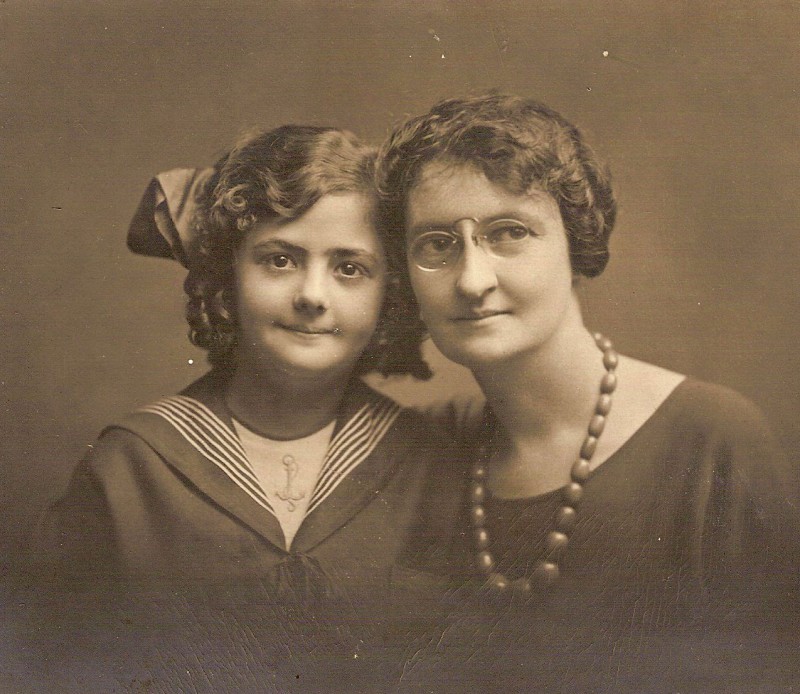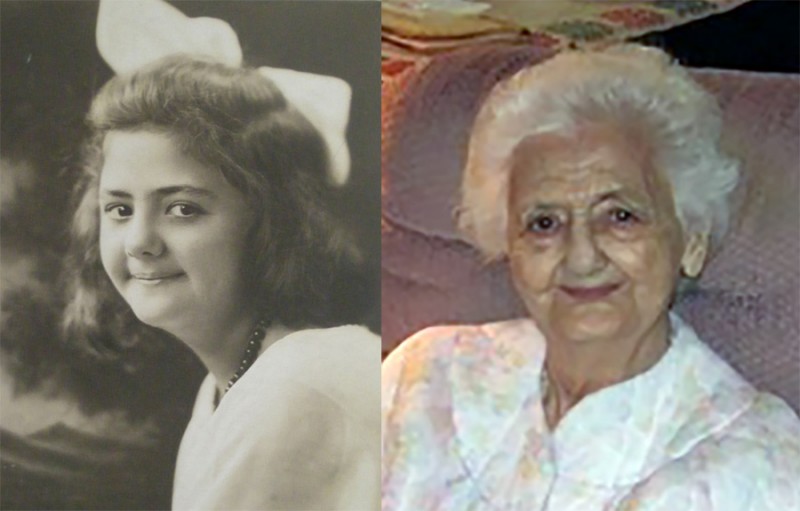Honoring Alice Duryea Kinney
In 1921, a charming orphan girl became an international sensation as the star of Near East Relief’s Alice in Hungerland. Today we honor Alice Duryea Kinney, who passed away this week at the age of 103.

Becoming Alice
Esther Razon was born in Constantinople (now Istanbul) in 1912 to Ottoman Jewish parents. Like so many children in Asia Minor, Esther was orphaned as a young girl. Her father died of wounds sustained during World War I, and her mother passed away several years later. Esther also lost five siblings to illness and malnutrition. Facing a life on the streets, Esther sought refuge in the Jewish National Orphans’ Home in Constantinople. Esther would live there for the next two years.
In addition to opening its own relief stations in and around Constantinople, Near East Relief made agreements with several religious organizations to provide supplies to existing orphanages in the area. This included Esther’s new home in Ortakeuy, which housed nearly 200 girls.
Mrs. Florence Spencer Duryea was a prominent New York City society woman with a special interest in Armenian issues. By 1920, Mrs. Duryea had built a reputation for herself in philanthropic circles. She was an early supporter of Near East Relief, and served as the National Director of Women’s Organizations for the institution. Mrs. Duryea frequently spoke about Near East Relief’s work and was quoted in prominent publications such as the New York Times and the Woman Citizen.
In the summer of 1921, Mrs. Duryea traveled to Constantinople as part of a commission Near East Relief workers and filmmakers. They planned to make a new type of silent film about Near East Relief’s work. Inspired by Lewis Carroll’s similarly-named children’s book, Alice in Hungerland would explain Near East Relief’s work in a child-friendly format. The film would blend appealing storytelling and hard-hitting journalism, and feature actual Near East Relief orphans.
Mrs. Duryea met Esther on a visit to Ortakeuy. She was completely captivated by the intelligent young girl. The filmmakers soon offered her the main role in Alice in Hungerland.

Alice's Journey
Alice in Hungerland opened with Alice, a healthy, well-loved American child, reading Alice in Wonderland. In the spirit of seeking a similar adventure, Alice stows away on a ship bound for Constantinople. Once there she meets up with her father, a Near East Relief worker. Alice and her father embark upon a tour of Near East Relief orphanages and relief centers in Turkey and the Caucasus.
Alice meets happy, healthy orphans living in Near East Relief orphanages. They entertain her with Armenian folk songs and dancing. Alice also encounters desperate children waiting for admission to orphanages, where they have been turned away for lack of resources. She is astonished to learn how much flour it takes to feed the children in just one orphanage. Alice distributes bread to the children at the gates while trying to understand why there cannot be a place for each child in the orphanage. Alice returns home determined to make a difference by spreading the word about Near East Relief’s important work.
As they traveled together, Mrs. Duryea grew even more fond of Esther. When the film was finished, Esther — now called Alice — traveled to New York City as Mrs. Duryea’s foster daughter. It is important to note that the suffering children that Alice met were played by actual Near East Relief orphans. The making of Alice in Hungerland would have been an emotional experience for the young actress. She had so narrowly escaped a similar fate.

Alice with Florence Spencer Duryea (left) and friends, c. 1921.

"Alice" Sweeps the Nation
The three-reel feature film premiered at the Yale Club in New York City on November 29, 1921. The popularity of Alice in Hungerland spread like wildfire. As anticipated, the film was particularly popular with children. In December 1921, Near East Relief’s New Hampshire director distributed free tickets to the film to all of the public schoolchildren in Manchester. Five thousand children attended the screenings in Manchester alone. Florence Spencer Duryea, who was also in attendance, reported that the children of New Hampshire “went home from seeing that film determined, like Alice, to help.”
Many children paid “admission” to see Alice in Hungerland with a can of condensed milk — a dietary staple in Near East Relief orphanages due to its nutritional content and ability to travel well. In January 1922, young filmgoers in White Plains, NY contributed 5,000 cans of condensed milk. Boy Scout volunteers packed the crates, and a local trucking company transported the milk to Near East Relief’s Brooklyn warehouse free of charge.
The film proved to be just as popular with adults. New York City hosted numerous screenings of Alice. Near East Relief’s board of trustees showed the film at their annual meeting in January 1922. Trinity Church, one of New York City’s oldest Christian congregations, showed Alice a few weeks later. Attendees at a June 1922 event at the Congregational Church raised $500 on the spot. Many groups combined the film with a lecture from a returned Near East Relief worker.
One notable story came from the town of Lyonsville, IL. The 200 residents of Lyonsville were eager to hold an Alice in Hungerland benefit screening — but not one house or building in Lyonsville was wired for electricity. A few volunteers borrowed a Delco electric light plant (a precursor to the electrical generator) from a town 12 miles away in order to screen the film. The people of Lyonsville donated an average of an astonishing $2 per person to Near East Relief after the screening.
Hollywood actors were equally taken with the message of Alice. In a letter praising the film for its inspirational qualities, Norma Talmadge wrote that Alice in Hungerland made her proud to be a film actress. Many silent film reels decayed or were destroyed as technology changed. Sadly, there are no known copies of Alice in existence.

Alice in Hungerland is a great picture. It proves again that fact is more potent than fiction. It is a revelation not only of a desperate need, but of the great heart of America.

An American Girl
The Duryeas settled into their home in New York City, and Alice began her life as an American girl. Florence Spencer Duryea legally adopted Alice. Interestingly, the adoption sparked a contentious court case. Mrs. Duryea’s fellow Near East Relief board member, Rabbi Stephen Wise, brought the case. He believed that Alice should be raised by a Jewish family given that she had been born to Jewish parents. Rabbi Wise, an important leader in Reform Judaism, urged a New York State Supreme Court judge to place Alice with a Jewish couple in order to preserve her cultural heritage. He alleged that Mrs. Duryea was not honoring her original agreement to bring up Alice in the religion of her late parents. Alice was attending the Young Ladies’ Seminary, a boarding school in Westchester County (just north of New York City), when Wise sued for custody.
The Jewish National Orphans’ Home in Constantinople sent a cable authorizing Dr. Wise to take custody of Alice on its behalf, in its capacity as the institution that had released the child into Mrs. Duryea’s care. At a conference presided over by Abram I. Elkus, the parties agreed to a temporary solution: Alice spent one month in Wise’s custody and was permitted to visit Mrs. Duryea on weekends. In May 1922, Mrs. Duryea successfully lobbied that she should, at the very least, have a role in choosing Alice’s new foster parents. The judge ultimately ruled in favor of the adoption, based in part on Alice’s own wishes. Alice was permitted to remain with Mrs. Duryea. The case was covered by national newspapers, including the New York Times.
Alice traveled to nearly every large city on the East Coast to promote Alice in Hungerland. Alice received a write-up in the New Near East magazine in July 1922 when she and a school friend — herself a former orphan from the streets of New York City — each donated a portion of their allowance to Near East Relief.

Alice Grows Up
Although the events of Alice’s early life had disrupted her education, she did not fall far behind. She completed twelve years of college preparatory education in only eight years. Alice graduated from high school in June 1930 and went on to study at Transylvania University in Lexington, KY. Alice also cultivated her lifelong love of music. She became a member of the prestigious Chautauqua Opera Company in Chautauqua, NY, where she sang in the chorus for several summers.
Alice and her mother remained active in Near East Relief and the Near East Foundation. Mrs. Duryea hosted bazaars in support of Near East Industries. She raised an astonishing $100,000 from the sale of refugee embroideries in 1931 alone. Alice sometimes served tea and Turkish coffee in traditional costume at these events alongside Nexhmie Zaimi, one of the first young women to graduate from the Near East Foundation school at Kavaje, Albania. Nexhmie lived with the Duryeas in Forest Hills, New York, when she arrived in America at the age of 16. She and Alice became very close.
Alice met her future husband, John I. Kinney, while working as a dance instructor at Arthur Murray Studios. Alice and John were married in September 1939. Alice raised her two daughters to have the same courage and determination that Alice developed as a child in Constantinople. Despite her early fame as a Near East Relief film star, Alice remained modest and unassuming.
Alice’s role in Alice in Hungerland impacted and improved thousands of lives. Her portrayal of a fictional American child visiting the very real orphanages of the Near East gave rise to a massive outpouring of donations to Near East Relief. The generosity that Alice inspired in everyday Americans helped Near East Relief to raise more than 130,000 orphans. The Near East Foundation presented Alice Duryea Kinney with a Medal of Honor in 2010.

Celebrating Alice's Life
Alice Duryea Kinney passed away peacefully in Butte, MT, on November 15, 2015. She was 103 years old. The Near East Foundation celebrates the life and legacy of the brave, bright-eyed girl who became a compassionate, inspiring woman.
You can read Alice’s full obituary by clicking here. In lieu of flowers, donations may be sent in memory of Alice Duryea Kinney to The Near East Foundation, 230 Euclid Ave., Syracuse, N.Y. 13210.
Special thanks to Alice Duryea Kinney’s family for the use of the photographs in this Dispatch.

Left to right: Alice and friend in opera costumes; Alice practicing her curtsey; Alice with her boyfriend Spencer.
